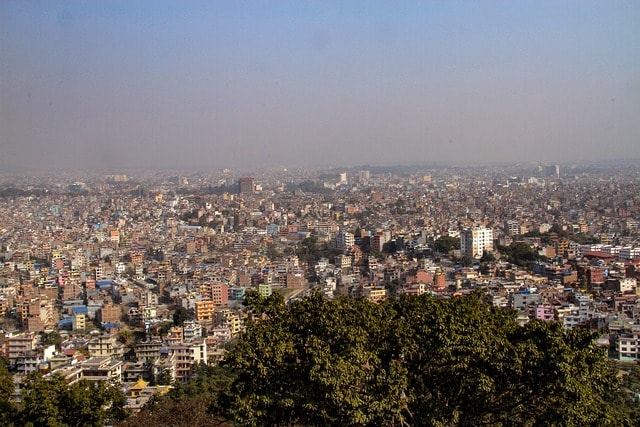Kathmandu-The City of Gods & Temples

A Quick Dive into Kathmandu’s History
Kathmandu isn't just old — it's ancient. Founded around the 12th century (and earlier if you count mythological roots), it was once a stop on the legendary Silk Road, attracting traders, monks, and artisans from Tibet, India, and beyond.
It was ruled by the Malla Kings, who built the stunning temples and palaces you still see today in Durbar Squares across the valley. Later, it became the capital of unified Nepal in the 18th century under King Prithvi Narayan Shah.
But here’s the thing — Kathmandu isn’t stuck in the past. It’s a living city where ancient rituals are still part of everyday life. History doesn’t just live in museums here — it dances in the streets.
Quick Facts About Kathmandu for Backpackers
Dreaming of World’s top destinations but need to keep your budget in check? Use our Travel Budget Calculator for a quick cost breakdown. Travel smart, estimate your expenses today!
-
Location: Central Nepal, within the Kathmandu Valley
-
Altitude: 1,400 meters above sea level
-
Best Areas for Hostels: Thamel (party + convenience), Patan (quieter + artsy), Bouddha (spiritual + chill)
-
Nicknamed: The City of Temples
-
UNESCO Sites: 7 in the valley!
-
Daily Budget: $20–$40 (hostel, street food, sights)
Must-Visit Places in Kathmandu
1. Swayambhunath (Monkey Temple)
-
A golden stupa perched on a hill with monkeys and mind-blowing views of the city.
-
Spiritual + slightly wild = backpacker favorite.
2. Pashupatinath Temple
-
The most sacred Hindu temple in Nepal.
-
Known for cremation ghats, riverside rituals, and the powerful evening aarti.
-
Backpacker tip: Respect the rituals; observe quietly from across the river.
3. Boudhanath Stupa
-
One of the world’s largest stupas, surrounded by Tibetan monasteries.
-
Perfect for reflection, prayer wheels, and catching a peaceful sunset.
4. Kathmandu Durbar Square
-
Epic architecture, wooden carvings, ancient courtyards, and the Kumari — the Living Goddess.
-
Backpacker tip: Grab local momo and people-watch from a temple step.
Hidden Gems You Don’t Wanna Miss
Asan Bazaar
-
A buzzing local market that feels like organized chaos.
-
Buy spices, incense, quirky souvenirs, or just watch life unfold.
Garden of Dreams
-
A quiet, European-style garden in the middle of Thamel.
-
Great for journaling, reading, or escaping the noise.
Itumbaha Monastery
-
A peaceful Newar Buddhist site tucked away near Thamel.
-
Free to enter and completely non-touristy.
Jazz Upstairs or Sam's Bar
-
When temples close, Kathmandu opens up in other ways.
-
Great spots for live music, fellow travelers, and local beer.
Best Places to Stay for Hostel Travelers
Thamel – Backpacker Central
-
Full of hostels, travel agencies, cheap eats, and nightlife.
Bouddha – Chill & Spiritual
-
Ideal for slower travel and deeper vibes.
-
Try: Shambaling Boutique Hotel (low-cost private) or local homestays.
Patan – For the Artsy Souls
-
Quieter, with beautiful squares and creative energy.
-
Try: Yala Heritage Home (slightly upscale but artsy vibes).
Kathmandu Travel Guide for Backpackers
Best Time to Visit:
-
October–November: Clear skies, perfect for treks and temple-hopping.
-
March–April: Warm weather + festivals like Holi and Nepali New Year.
How to Get Around:
-
Walk in the Thamel or Old Town areas.
-
Rent a scooter for around $8–10/day.
-
Taxis are everywhere, but bargain hard.
Common Phrases:
-
Namaste – Hello / Respectful greeting
-
Dherai Ramro – Very good
-
Kati ho? – How much?
-
Dhanyabaad – Thank you
Food to Try:
-
Momos (steamed or fried dumplings)
-
Thukpa (Tibetan noodle soup)
-
Dal Bhat (The backpacker’s all-you-can-eat rice + lentils combo)
-
Masala Chiya – Spiced Nepali milk tea
Backpacker Tips for Kathmandu
-
Carry a universal adapter (power cuts can still happen).
-
Hot water isn’t always guaranteed in budget places — ask before booking.
-
Use local currency (NPR); many small shops don’t accept foreign cash or cards.
-
Carry toilet paper — it’s not common in public restrooms.
-
Be respectful in temples: remove shoes, avoid pointing feet, and do not take selfies inside sanctuaries.
-
Buy a local SIM (Ncell or NTC) for cheap data and Google Maps freedom.
Final Thoughts
Kathmandu isn’t polished — and that’s exactly what makes it magical. It’s dusty, it’s divine. It’s loud, yet spiritual. It’s a place where you’ll eat momos in a 600-year-old courtyard, or have a deep conversation with a monk over tea.
You may come here for Everest or Pokhara, but Kathmandu stays with you.
So, if you're a hostel traveler, solo nomad, or backpacker on a shoestring, give Kathmandu the time it deserves.
It’s not just a stopover. It’s a feeling.

